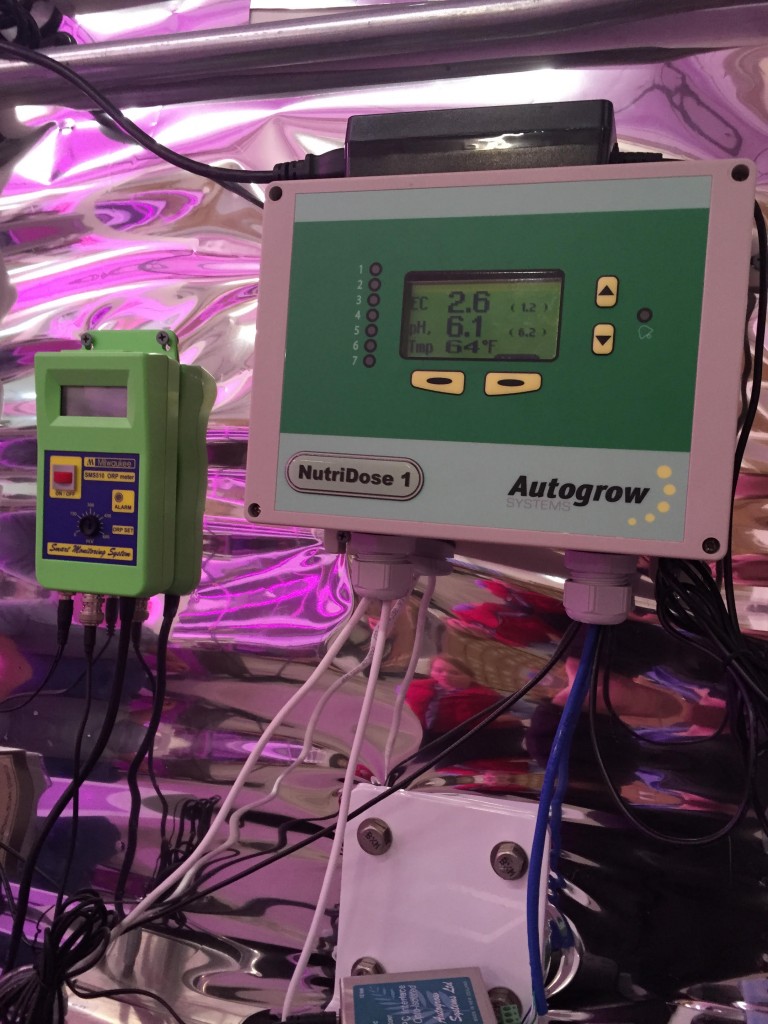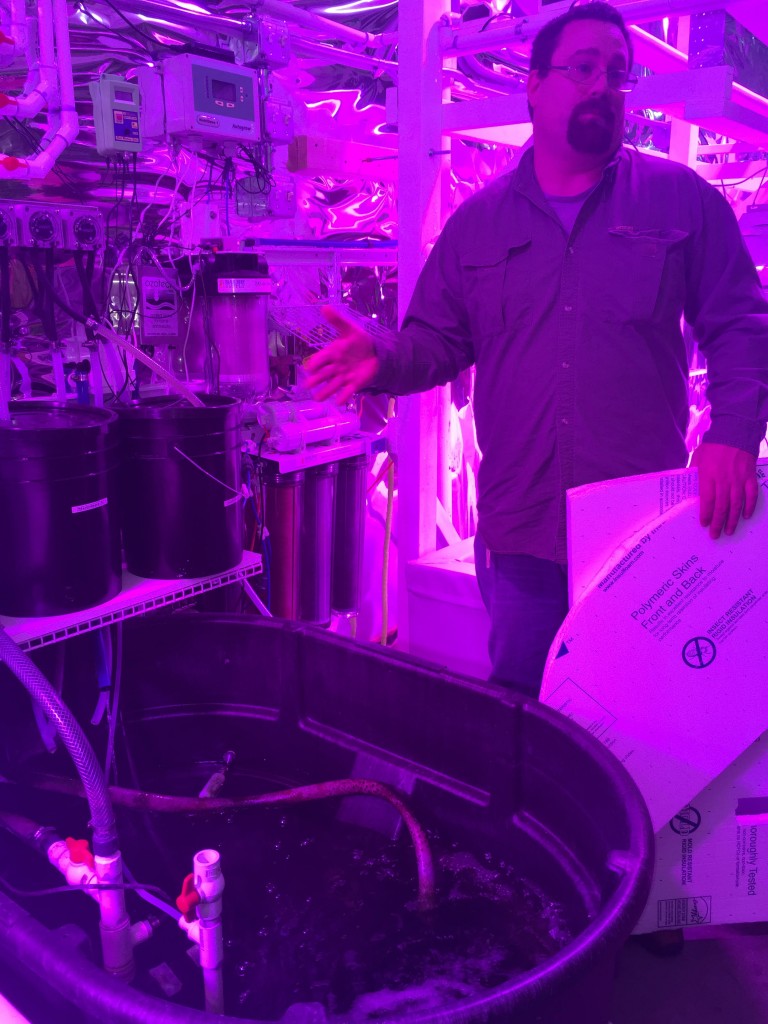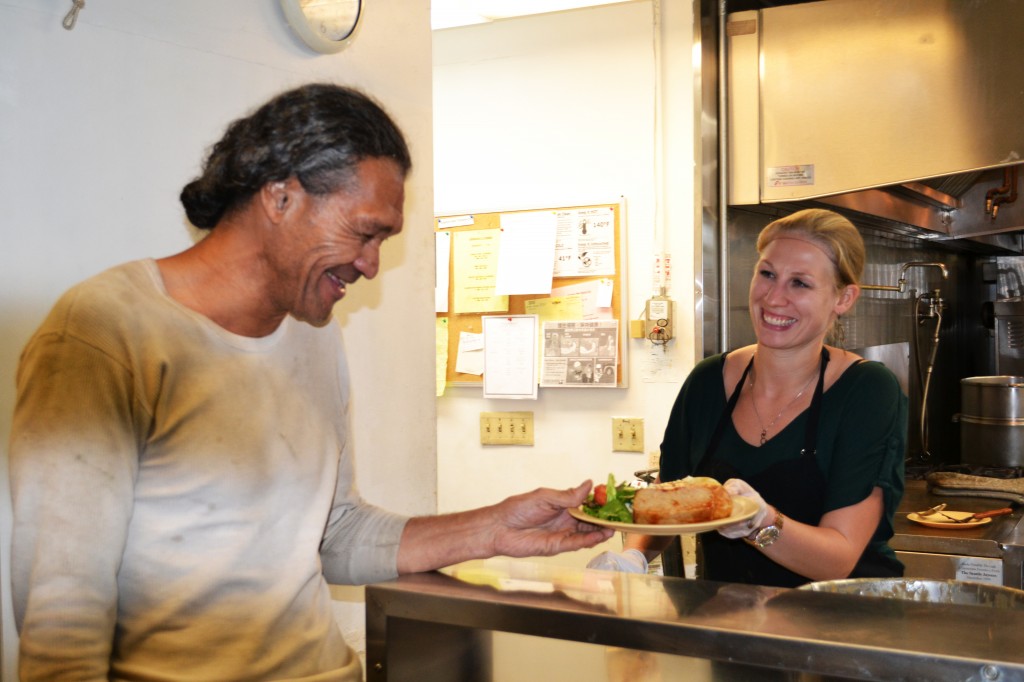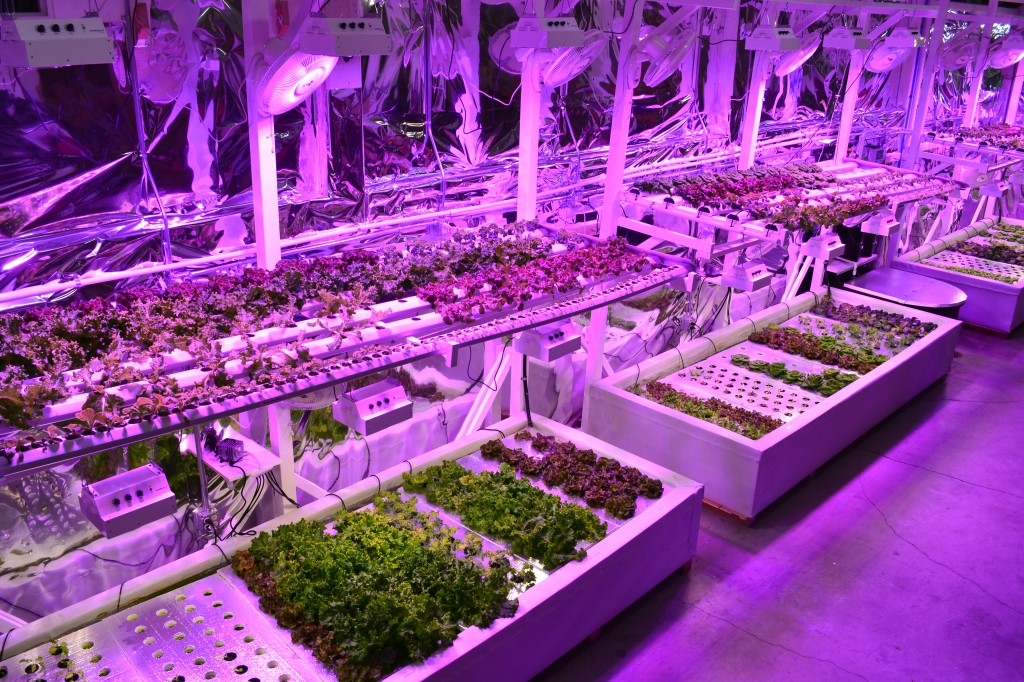In Seattle’s Belltown neighborhood, the Millionair Club Charity has been providing help to those living in poverty since 1921. The organization offers food, shelter, jobs, and other essential support services to individuals who are experiencing homelessness or unemployment in the greater Seattle area.
Roughly one year ago, the staff took on an ambitious urban agriculture project to provide nutritious food for people who need it, led by Director of Programs Brent Herrmann. Deep in the basement, under the purple glow of hanging LED lights, green leafy vegetables are growing as they float suspended in tremendous tanks of water. Upon harvest, the vegetables grown here – bok choy, kale, and four varieties of lettuce – are taken upstairs and prepared into nutritious salads for Seattle’s hungry. The energy efficient LED lights were partially funded by a grant from Seattle City Light.
Hydroponic Mechanics
Hydroponics is a method of growing plants without soil using water and mineral nutrient solutions. The setup here is what’s known as a “continuous-flow solution culture,” meaning that the nutrient solution constantly flows past the roots. This approach is easier to automate than static solution hydroculture because sampling and adjustments to the temperature and nutrient concentrations can be made from a large water reservoir that serves the entire system of plants.
The water goes through sterilizer first to kill any bacteria like E. coli that could get into the food. Sterilized water is added into the central reservoir and nutrients are mixed in. Pumps then move water out of the reservoir. The water travels through the manifolds and channels and into the growing tubs, where eventually an overflow system brings it back to the reservoir where it can be tested and treated when necessary.
“If the pump stops and the water goes stagnant, these things will die,” Herrmann explained. “They can’t live on water and light alone.” The water must move in order to circulate the mineral nutrient solution. “Soil moves too,” Herrmann notes. “We think of soil as static but it moves more than you’d think. Water flows through it, bugs move stuff around, farmers sprinkle it with fertilizers.” A “dosing system” unit is installed close to the reservoir which periodically tests the water’s pH and adds “pH up” and “pH down” solutions to adjust acidity accordingly. “We need to pick plants that can coexist at the same pH because they all use the same water,” Herrmann explains. “Everything is connected here.”

- This automated dosing system helps regulate pH and temperature.
Why Grow Your Own?
So why does the Millionair Club Charity grow their own vegetables? Reliability is a big factor. The basement garden guarantees that they’ll be able to serve at least one serving of fresh, green leafy vegetables every week. According to Lindsey Webb, the Food Programs Manager, almost all of the food served at Millionair Club Charity comes from donations. But donations can be hard to predict or plan around. The hydroponic garden brings a predictable flow of nutritious food into the operation. “This helps fill gaps,” Webb said.
Webb explained that fresh vegetables are especially important for the population in question. “Our population is especially vulnerable to certain health conditions,” she said, “including high blood pressure, diabetes, obesity, and heart conditions.” Low income Seattle residents are typically affected by food insecurity, limited cooking space, and a lack of affordable produce.
“What’s cheap isn’t necessarily what’s healthy,” Webb reminds. Many in this population resort to eating lots of fast food, processed food, and microwaved snack foods. “Over and over again I hear, ‘Give us more fresh fruits and vegetables,’” Webb said. By growing their own food, the organizations has achieved consistency around the lettuce supply that they otherwise lacked.
Reduced transportation expense is another big factor which Herrmann stressed. “About 80 to 90 percent of our produce is shipped from California. That’s often about 900 miles of farm-to-fork travel required. Each head of butter lettuce we grow costs about $1.50 to produce. But that’s it. There’s zero transportation costs.”

Director of Programs Brent Herrmann standing in front of the central reservoir of the Millionair Club Charity’s hydroponic garden.
Experimental Vegetology
A corner of one growing tub contains a few experimental crops. Several small white cipollini onions await evaluation. Enormous radishes appear to have been too successful for their own good. Herrmann admitted that radishes are not especially popular or practical. “Tubers like radishes or potatoes are major energy-suckers,” he said. “The romaine is a bit of a failed experiment too,” he admitted. Apparently the ideal growing conditions for romaine are slightly different than those favored by the garden’s prime crops. Herrmann explained that green leaf and red oak lettuces produce the best yield. These varieties make for great salads because they bring different colors and textures to the plate.

- From farm-to-table without leaving the building!
The hydroponic project at Millionair Club Charity is an innovative effort to bring food production closer to our urban centers: reducing farm-to-fork distance, bringing freshness and nutritious food to people in poverty, and spreading knowledge of agriculture and food systems.
With the holiday season close at hand, click here to learn about opportunities to get involved with Millionair Club Charity.

